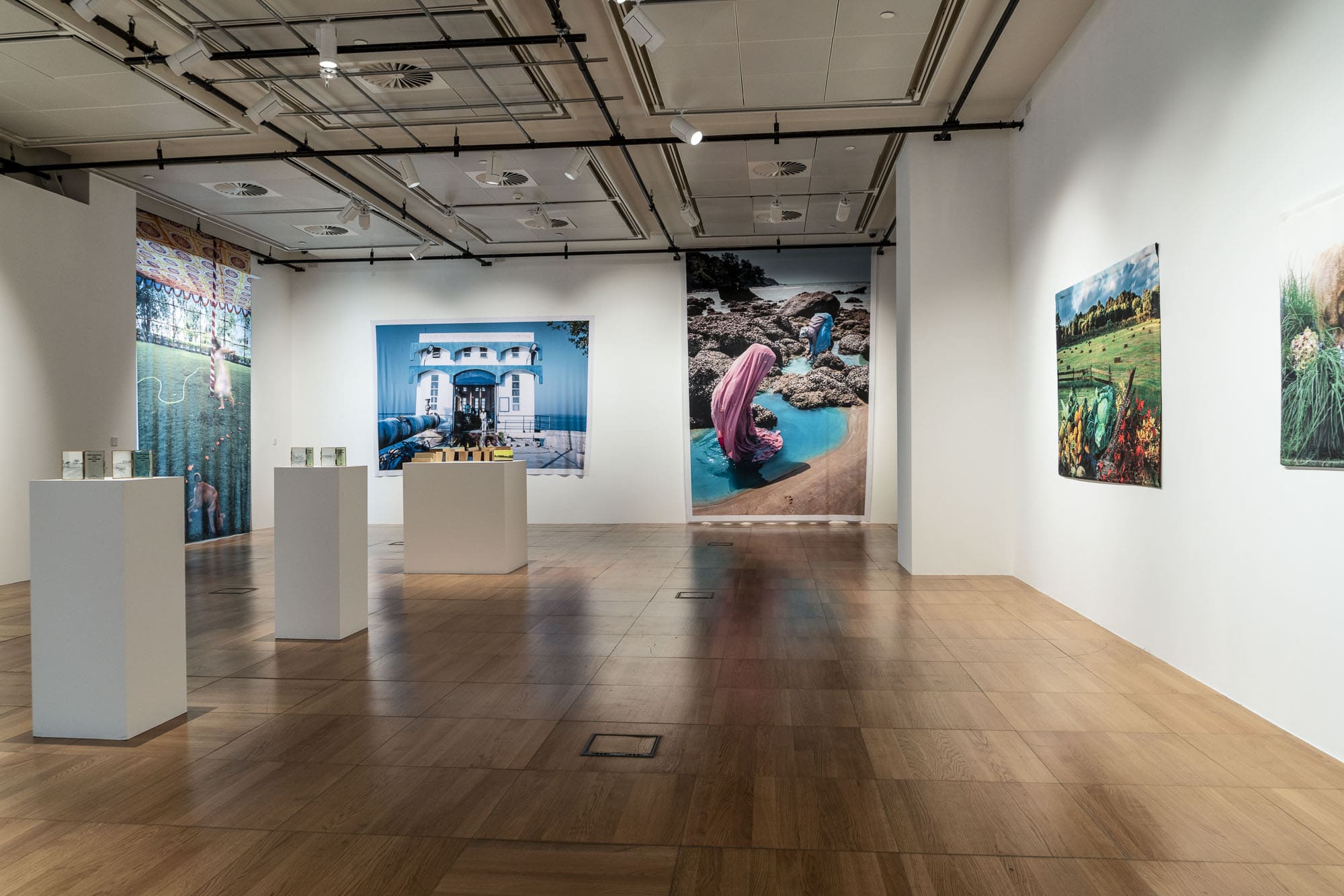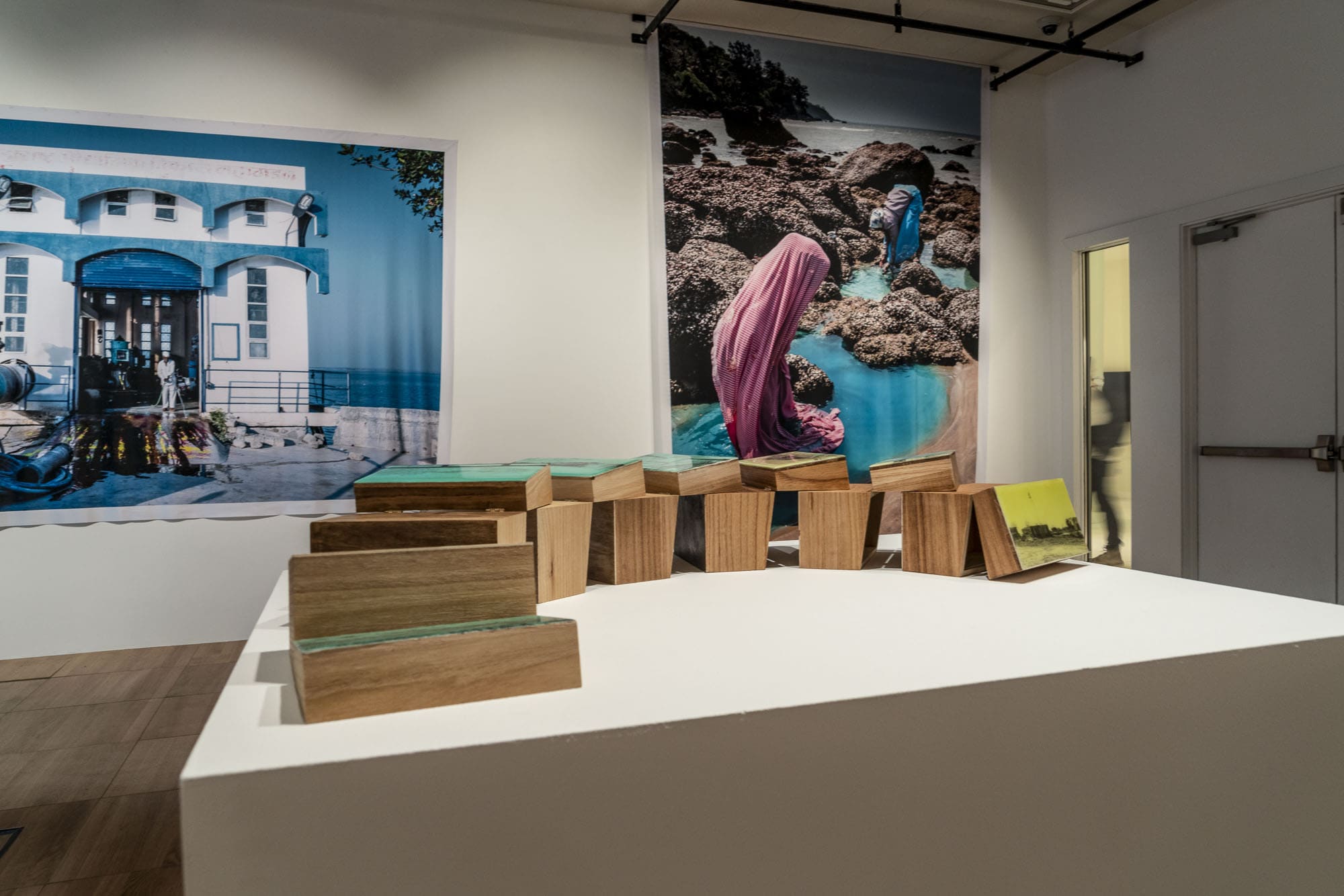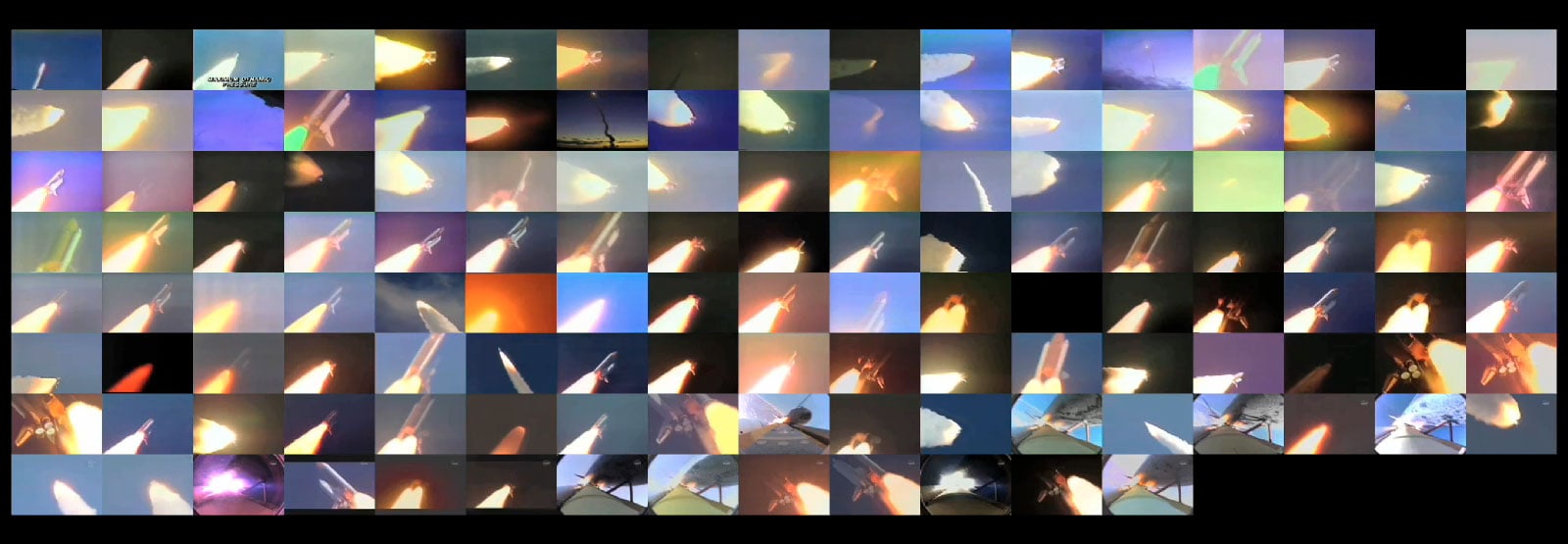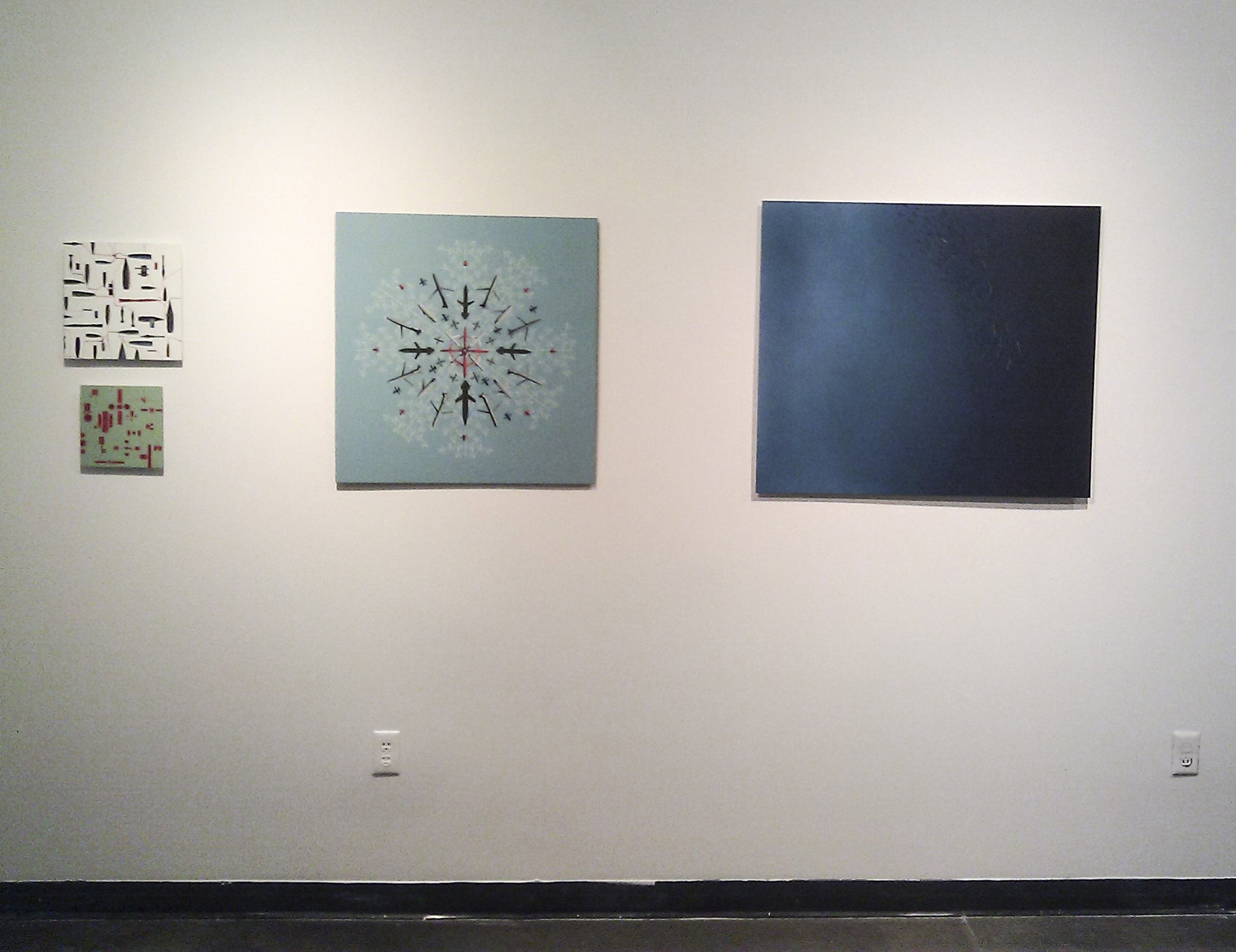Curatorial Statement
In my curatorial work, I look at many topics, but I strive to have an anti-oppressive practice, which, in this case, means anti-racist, anti-colonial, anti-patriarchal, anti-heteronormative, inclusive, and intersectional using decolonial, resistance-based, and curatorial and arts-based activism approaches. Working with complementary, overlapping practices as an artist and curator will help give me a more complete toolbox to explore and create.
My current PhD project is looking at Mundane Futures. Mass Media’s vision of the future has traditionally been written by a handful of western, hetero male writers, thinkers, designers, and venture capitalists. The outcome is that the future is envisioned as a place where everyone wants flying cars and one where justice for disenfranchised, marginalized, and colonized peoples is not a priority. I am looking towards futures that are more just, more sustainable, more equitable, more fair for more people. Much of the artwork I’m investigating falls into realms such as Afrofuturism, Indigenous Futurisms, African Futurisms, Queer Futurisms, and other speculative movements, but one of the exciting parts of my curatorial practice is finding work that is speaking to these better futures without explicitly saying so.
My curatorial work is broader than just exhibitions. I have curated or co-curated screenings, performance events, artist talks, and a symposium. I also write and lecture about art. My years of teaching experience also factor into my practice in my love of working with emerging artists (at any age) and the passion I have for working through a project from ideation to exhibition.
My curatorial work takes some of the same avenues as my studio practice in terms of media and topic, but one of the reasons I love curating is that I can take it in directions my artwork does not go. I can engage topics and methods that are outside my studio purview. I can see wider, deeper, different views.
Crossings and Corridors: Linda Adele Goodine and Saba Qizilbash
2019
NYUAD, Project Space
Curatorial Statement
Crossings and Corridors featured the work of Saba Qizilbash and Linda Adele Goodine, two artists who deal with difficult geopolitical realities in their work through widely different methods. Qizilbash’s intricate, enticing drawings lure the viewer into a charged, hostile space, such as a border crossing between Pakistan and India. Goodine’s work, massive, complex, and vividly colorful deals with topics such as the rising conflicts in the struggle between land conservation and economic progress.
Linda Adele Goodine has been creating large-scale, performative, elaborate, constructed photos for three decades. The Blue Jackal Under the Tree, made during her Fulbright Fellowship in India, explores water scarcity, food systems, and river confluences through the lens of the monsoon. Her part constructed, part found artworks are a cross-disciplinary, and intergenerational dialogue in which she seeks an educational and collaborative solution for social justice and equality. For this exhibition, Goodine will combine works created during her Fulbright residencies with selections from two previous bodies of work: the Gibson Lemon Series and the Beeline Highway Series.
In Saba Qizilbash’s work, she addresses themes of boundaries and limitations. Her small-scale, finely detailed drawings feel like vestigial sites between the places we reside: border gates, watchtowers, abandoned bridges. In her more complex larger drawings, she constructs imagined, labyrinthine pathways. From Pakistan to Bangladesh, for example, Qizilbash stitches the partitioned lands back together to create a fantastical landscape that could never exist but looks like it could.
–Flounder Lee, Curator
On this night, for the first time, something will happen…
Jean Paul Najar Foundation, Alserkal Avenue, Dubai and American University in Dubai
February 2018
Performance projects by: Areej Kaoud, Sarra’a Abdulaziz, and Noush Anand
Curatorial Statement
The Olivier Mosset show and BMPT’s practice were starting points for thinking about performance as a way to respond to the world. I thought of aspects than ran through their work and picked artists who could keep these in mind when creating new work.
Repetition was the first aspect. Mosset painted a flat black circle in the center of a canvas, and then repeated it in more than two hundred paintings over the next decade. BMPT never repeated the manifestations, although they did four distinct versions. I asked the artists to think about how repetition changes or breaks work. Kaoud sings a Palestinian lullaby, then sings it again and again, inviting the audience to join in on this anxiety reducing exercise.
The second aspect that really stood out was the Infrathin. A Duchampian phrase which is hard to define. Like a Venn Diagram that appears as two side by side circles. Or as Hector Obalk says, the “infrathin characterizes any difference that you can easily imagine but doesn’t exist, like the thickness of a shadow”. Abdulaziz works through various objects that she doesn’t quite fit inside. Sometimes she gets close but she, and by extension all of us, never perfectly fit into many roles.
Anand creates an orchestration that has instructions but also gives participants the option to disobey. She creates mini-groups (sections) that can collaborate, resist, or go it alone.
Overall the performances are separate, but connected through sound, anxiety, the balance between collectivity and disconformity.
–Flounder Lee, Curator
The Future is…Ordinary?
Screening at Shangyuan Art Museum
September 24, 2019
Curated by Flounder Lee
Additional Selection Committee: Frankie Chow and 席拿 (Lee Yun)
People have utopian and dystopian ideas about the future. Techno-optimism pervades Silicon Valley. Environmental apocalypse is a constant threat. But what if the future was neither complete utopia nor dystopia? What if humanity continued to trudge along between these extremes, as it always has?
The places between is what this screening is about. What will the day to day life of an average person be, wherever that person should happen to live? What will recreation, work, culture be like? What about food, clothes, homes?
Videos dealt with the everyday, the “normal”, the quotidian. The screening including wide ranging looks at the future including sino-futurism and queer futurism. The video styles ranged across the spectrum from traditional animation, to glitch, to non-linear narratives.
Participating artists were Mariah Blue, Johannes C. Gerard, Toban Nichols, Łukasz Horbów, Juan and Ivan Negroni, Zhong Lu, Irena Paskali, Patrick Jenkins, Milad Forouzandeh, Wang Di, Alex Mari and Myani Guetta, Sid and Geri, Austin Sley Julian
Aerospacial
2011
Frank and Katrina Basile Gallery, Herron School of Art and Design, IUPUI, Indianapolis
The three artists in this exhibition are all visually distinct but all working on projects that are honed in on the aerospace theme. All three happen to live in the Los Angeles area. Maybe it is the skies of LA being filled with a proliferation of airplanes, ghetto birds (helicopters), and blimps that draw all of their eyes upward. Maybe it has something to do with the fact that the desert is nearby with many airbases, bombing ranges, and even the shuttle landing strip. No matter the reasons, these three artists approach the subject from radically different perspectives but all do it well.
Sam Davis’s art making revolves around sci-fi and retro themes. You’ll find iron rockets, lost astronauts, robots, and glowing UFOs in his work. His photography feels unique and a bit strange, but is always beautiful. Using an old school panoramic medium format camera, Sam creates scenes that wouldn’t have been out of place in a Heinlein or Asimov novel in the 50s.
McLean Fahnestock’s work usually revolves around the media of politics. Recently turning her gaze to the media of space launches, McLean’s video piece, Grande Finale, explores the legacy and impending end of the Space Shuttle program. The epic video will show all 134 Shuttle launches, simultaneously. The video is one of power and discovery. It brings a sense of awe to the viewer.
Darren Hostetter loves the machines of war and paints them into intricate patterns that from a distance can resemble underwater scenes or snowflakes. Darren also hates the war itself and it comes across in the insidiousness of the objects he chooses to paint. Bombs and drones fill the surface, which happens to be recycled aircraft aluminum. The works are simultaneously gorgeous and sinister.
–Flounder Lee, Curator
Double Vision II – Multi-channel Video Festival
April 10, 2013
Location: Basile Auditorium, Herron School of Art and Design
Eskenazi Hall, 735 West New York St., Indianapolis, IN 46202
Multi-Channel video work is a style that is often included in exhibition format but rarely seen in a festival-type screening; therefore this festival will exclusively feature this format. Works in the screening will vary from two up to 64 channels (videos). Can attention stay focused on more than one video at a time? How can it play with perception and engagement?
Artists include: Charmaine Ortiz—Carolina Beach, North Carolina; Philippos Kappa—Athens, Greece; François Macré—Arrondissement of Gap, France; Adam Forrester—Athens, Georgia; Rembrandt Quiballo—Tempe, Arizona; Douglas Gast—Pullman, Washington; Stefan Petranek—Indianapolis; McLean Fahnestock—Long Beach, California; Malena Barnhart—Tempe, Arizona; Thomas Lewis—Indianapolis; Emily-Jane Robinson—London, UK; Inese Verina—Riga, Latvia; Paul Wierbinski—Germany
——————————————————————————–
One Performative Night was a night of performance art both live at Big Car Gallery in Indianapolis and broadcast via the internet. In the middle of Fringe Festival but in a visual art setting, One Performative Night explored the overlap between the arts disciplines and the intersections between live and tele-presence performance art.
The evening is in periphery to another performance exhibition Low Lives. Low Lives was a one-night exhibition of live performance-based works transmitted via the internet and projected in real-time at three venues throughout the U.S.– FiveMyles, Brooklyn; Diaspora Vibe Gallery, Miami; and labotanica, Houston in partnership with Project Row Houses. Several of the other Low Lives performances will be shown during the evening, interspersed with local performances.
Participating artists were Jessica Dunn, Kurt Lee Nettleton, David Jackman, Flounder Lee, Brian Priest, and Luba Winship.
——————————————————————————–
Double Vision: A Dual-Channel Video Festival
This festival was screened at Herron School of Art and Design in the Basile Auditorium in conjunction with the photography and video exhibition Between History and Memory. Herron is located on the campus of Indiana University – Purdue University Indianapolis (IUPUI). The screening took place on Wednesday, October 28th, 2009. Two Channel video work is a style that is often included in exhibition format but rarely seen in a festival-type screening; therefore, this festival will exclusively feature this format.
Participating Artists included: Wim Janssen (Belgium), Dusica Drazic (Serbia), N_Drew (Indiana USA), Dahlia Elsayed and Andrew Demirjian (New Jersey, USA), Chris Brandl (Germany), Cecilia Beaven and Federico Guitierrez (Mexico), David Montgomery (Florida, USA), Claire Hodge (Canada), McLean Fahnestock, Jean Robison, Jeremy Eichenbaum (California, USA), Jason Dee (Scotland, UK), Jennifer Schwed (Washington DC, USA), Jennie Mynhier (Missouri, USA), Joaquin Palencia (Philippines), Joo-Mee Paik (South Korea), Duane Linklater (Canada), Liz Rodda (Oklahoma, USA), Mary Rachel Fanning (Illinois, USA), MIchael Szpakowski (UK), Nate Larson (Maryland, USA), Marni Shindelman and Perry Bard (New York, USA), and Rick Falck (Michigan, USA)
Curated by Flounder Lee; Juried by Brent Aldrich, Ashley Holland, and Flounder Lee
——————————————————————————–
LA2ND brought several Los Angeles artists to Indianapolis for a video exhibition at Biscuits and Gravy Gallery in the Murphy Arts Center.
The artists were Jeffrey James, Jocelyn Foye, Sierra Brown, Kyle Riedel, Desiree DeVirgilio, Jean Robison, Jeremy Eichenbaum, Pascual Sisto, Jeff Foye, and Gordon Winiemko
——————————————————————————–
Greater LA MFA Exhibition
MFA students from California State University, Long Beach kicked off the academic year by presenting two concurrent art openings that celebrate the work by graduate students throughout the greater Los Angeles area—Greater LA MFA: A Student to Student Invitational Exhibition, and CSULB’s MFA Open Studios. Greater LA MFA was on view from August 28 through September 7, 2005 with an opening reception at 5-8PM.
Co-Curated by Carleton Christy, C. Finley, Jeff Foye, Jocelyn Foye, Flounder Lee, & Jean Robison































